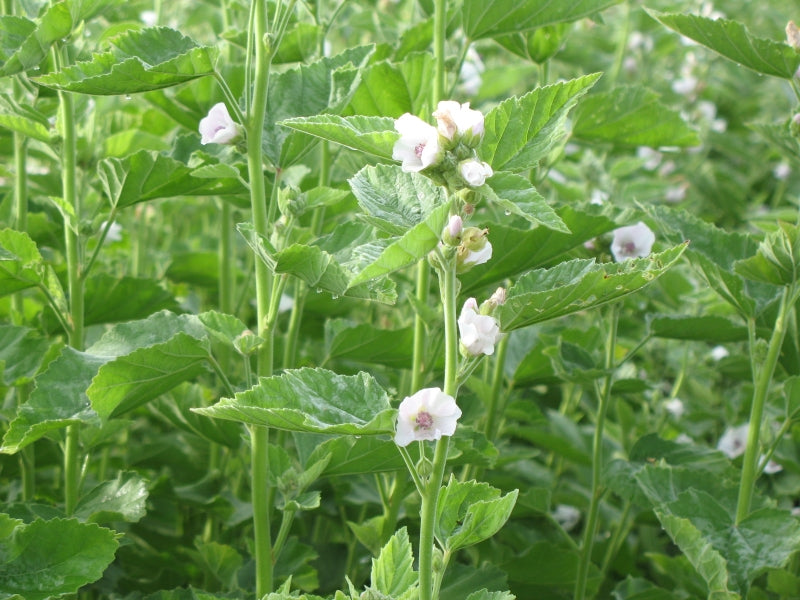
Marshmallow
Share
Marshmallow – a plant that grows well in wet, marshy areas and is native to salt marshes along the ocean in Europe and western Asia, its Latin name is Althea officinalis and it is a member of the Malvaceae (Mallow) family. The leaf and root are both used medicinally. It is highly likely that the name of the store-bought marshmallows you are familiar with was derived from this plant. The root is high in mucilaginous carbohydrates that can be soaked, whipped into a froth, and then sweetened – probably the origin of the marshmallow as we know it today.
Primary properties: demulcent, emollient, diuretic, anti-inflammatory
Based on the above primary properties of marshmallow, this plant can be used in to soothe and cool inflammation of the gastrointestinal tract, including a sore throat, acid reflux, and in cases of gastritis or colitis in the stomach or intestines. Both the root and leaf can be used for this purpose, although the root is more mucilaginous (slippery, mucus-forming) than the leaf. The root and leaf both stimulate a reflex action whereby the lungs and urinary tract can also be soothed and cooled. Therefore, marshmallow is useful in cases of dry coughs and to help soothe the burning pain of urinary tract infections. Topically, the root or leaf can both act as an emollient, moisturizing and protecting the skin, as well as soothing and cooling a dry, hot skin condition such as a rash or burn.
The root can be taken in powder form, in which case you are consuming the whole root, by shaking in water or juice and swallowing, or by taking as a capsule. Shaken in water, it will also soothe the throat and esophagus as it makes its way down. The root and leaf can also both be used in a tea. A “cold infusion” will get more of the cooling mucilage/carbohydrate in the tea, so you can soak the root or leaf in cold water for several hours to overnight and drink the fluid. Tincture is the least-preferred method for using this plant because you will not get as much of the soothing and coating properties, although as a diuretic and anti-inflammatory the tincture is still useful.
